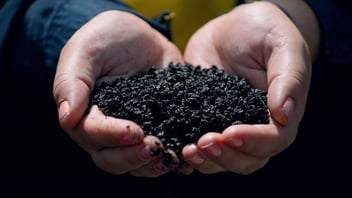How to transform your legacy data into usable digital assets
Water utilities generate large volumes of drawings, documents and data as part of creating new or maintaining and operating their facilities and network infrastructure.
Most have archives containing even larger volumes of legacy information, which is often stored in multiple locations and seldom cross-referenced.
This is according to AECOM Digital Engineering Plant Lead – Queensland and Northern Territory Michael Kolb, who said project engineers and water treatment plant operators and maintenance teams spend too much time looking for the latest and most accurate data as a result.
“There’s a gap between the amount of information coming in and what operators are able to deal with,” Kolb said.
“In a digital world, they should be able to access the right information every time, straight away.”
Kolb will detail how utilities can digitise their information, and the system AECOM uses to do this, at Ozwater’19 in Melbourne.
This includes uploading legacy data such as schematics, PDFs, drawings, datasheets, and piping and instrumentation diagrams to a digital database and linking to visualisation software either in the form of a 3D model or laser/photogrammetry.
AECOM’s system, which can scrape about 4000 documents in three weeks, uses an algorithm to pick up the documents’ metadata (title, number, creator, revision, etc.) and the tags within a document.
“If you’re looking at a schematic diagram, the system will grab tag data like the wiring number, instrument number, pump, tank, valve, etc. It will put this information into a database via a load file and associate it with that drawing,” Kolb said.
He said the same can be done with written documents like operations and technical manuals, specifications and scopes of work. The system will associate these documents to an object, for example a water treatment plant tank or pump, building a data map of the project or facility.
Right on time
Kolb said AECOM has worked with mining companies in Australia to turn their documents into digital assets, and that similar technology is used extensively in the UK oil and gas industries.
He said the company sees great potential for the water industry, but the challenge is getting businesses to try new approaches.
“Water businesses tend to be behind when it comes to the digital world; they tend to be digital followers not enablers, but that will change dramatically in the next three to five years as legislators demand digital approaches,” he said.
“Cost is a major driver; often they don’t have the budget to spend on something new that’s not proven in their eyes, but we can demonstrate this works and saves money in asset management.”
Kolb said it is only a matter of time before more intelligent data management becomes commonplace in the industry.
“There are a lot of advantages for water treatment plant owner-operators, in supporting operational readiness programs and quality assurance,” he said.
“There’s also a big safety aspect: having a digital version of your plant in front of you means fewer people need to be out in the field … It’s about having the right information at the right time for the right people."
Learn more about turning your legacy data into digital assets during Michael Kolb’s presentation at Ozwater’19 in May. To view the full program and to register, click here.


